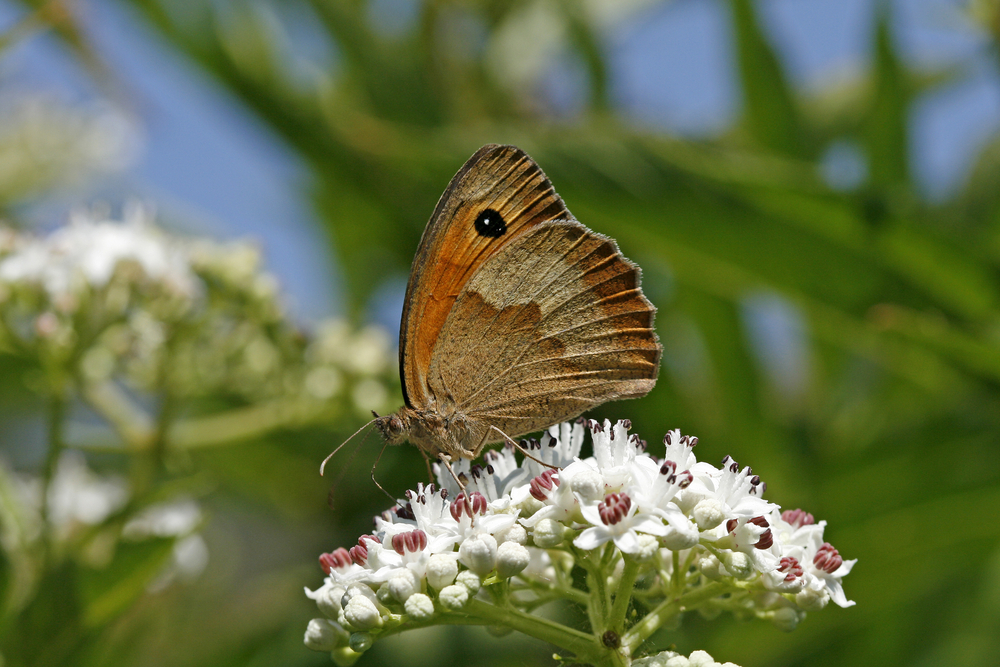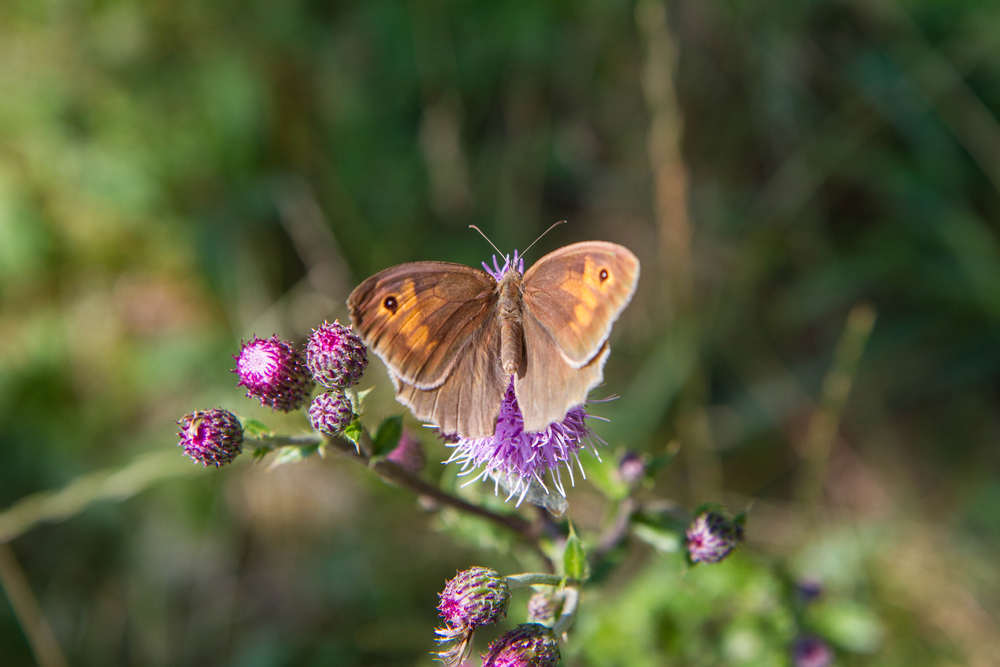The meadow brown butterfly is a beautiful and fascinating creature that can be found in the UK. It’s one of the most common species of butterflies, but there are still plenty of interesting facts about it to discover. With its distinctive orange-brown wings and white spots, this pretty insect is sure to captivate anyone who takes time to observe it in nature. Whether you’re looking for an overview of this butterfly or tips on how best to observe them out in the wild, we have all you need right here – plus some great gear recommendations too! So join us as we take a closer look at our beloved meadow brown butterfly.
Overview Of The Meadow Brown Butterfly

The meadow brown (Maniola jurtina) is a species of butterfly found in the UK and other parts of Europe. They have an average lifespan of about 2 weeks, although some may live for up to 6 weeks. They are active during daylight hours and rest at night when temperatures drop below 10°C.
Physical Characteristics
Meadow browns have distinctive orange-brown wings with black spots with white dots on its forewings, and a wingspan that can reach up to 5 cm. The underside of the wings are paler than the upper side, with greyish-brown or yellowish markings.
Males tend to be more brightly coloured than females, which helps them attract mates during mating season from late June until August each year.
Habitat and Distribution
Meadow brown butterflies prefer open grassland habitats such as meadows, pastures, roadsides and parks where there is plenty of nectar-producing flowers available for them to feed on throughout their life cycle. They can also be found in gardens, but they tend not to stay long if there isn’t enough food available or suitable shelter nearby. In the UK, they are most commonly seen between May and September in England, Wales and Scotland but they can also be spotted in Ireland too.
Behavior & Diet
When threatened by predators such as birds or spiders, these butterflies will quickly fly away due to their strong flying abilities. If caught, however, they will play dead until released again.
Interesting Facts About The Meadow Brown

Mating Habits and Lifespan
Meadow browns have an average lifespan of about 10 to 12 days, but they can live up to three weeks if conditions are favourable. During this time, males will actively search for females by flying around and releasing pheromones into the air. When a female is located, mating occurs quickly, and eggs are laid on nearby plants or grasses within 24 hours.
Predators and Prey Relationships
Predators of the meadow brown include birds such as sparrows, crows, blackbirds, rooks, thrushes, starlings and other insectivorous birds; spiders; lizards; frogs; wasps; dragonflies; ants; centipedes; beetles and moths. The larvae feed on grasses while adults feed mainly on nectar from flowers like daisies, clover and thistles.
Migration
The meadow brown has adapted to its environment over time with the ability to migrate long distances during cooler months when food sources become scarce in their native habitats. This migration pattern helps them survive harsh winters by travelling southward towards warmer climates where food sources remain plentiful throughout the year. Additionally, they have evolved thicker wings which help them fly faster than other butterflies, allowing them to escape predators more effectively.
How To Observe The Meadow Brown In The Wild

To get the best chance of seeing this beautiful creature, here are some tips on when and where to observe them in the wild:
Best Time Of Year To See Them In The UK
The meadow brown butterfly can usually be spotted between late June and early September throughout most parts of England, Wales and Scotland. They may also appear earlier or later depending on weather conditions, so it’s important to keep an eye out for them at any time during these months.
Ideal Locations For UK Sightings
Meadows, grasslands, parks and gardens are all great places to look for meadow browns as they prefer sunny spots with plenty of flowers that provide nectar sources, such as daisies, clover and thistles. They can also sometimes be found near woodland edges or hedgerows, which offer shelter from windy days.
If you want more chances of spotting a meadow brown, why not try creating your own wildlife-friendly garden? Planting nectar-rich flowers like lavender will attract butterflies while leaving piles of dead wood provides habitat for insects such as bees that feed on pollen. You could even put up bird boxes or build bug hotels which will give other creatures somewhere safe to live too.
Conclusion
With its distinctive orange and brown wings, it is easy to identify and observe. By learning more about this butterfly’s behaviour and habitat, you can increase your chances of seeing one in the wild. Additionally, by using appropriate gear for observing wildlife, such as binoculars or cameras with telephoto lenses, you will be able to get up close and personal with these beautiful creatures. So if you are looking for an exciting way to spend time outdoors while also learning more about nature, then why not try searching for meadow brown butterflies?

Ash is a contributing author who has been writing about wildlife for as long as he can remember. He has a vast knowledge of many different types of animals, from the tiniest shrews to the great whales that live in the deepest oceans.
